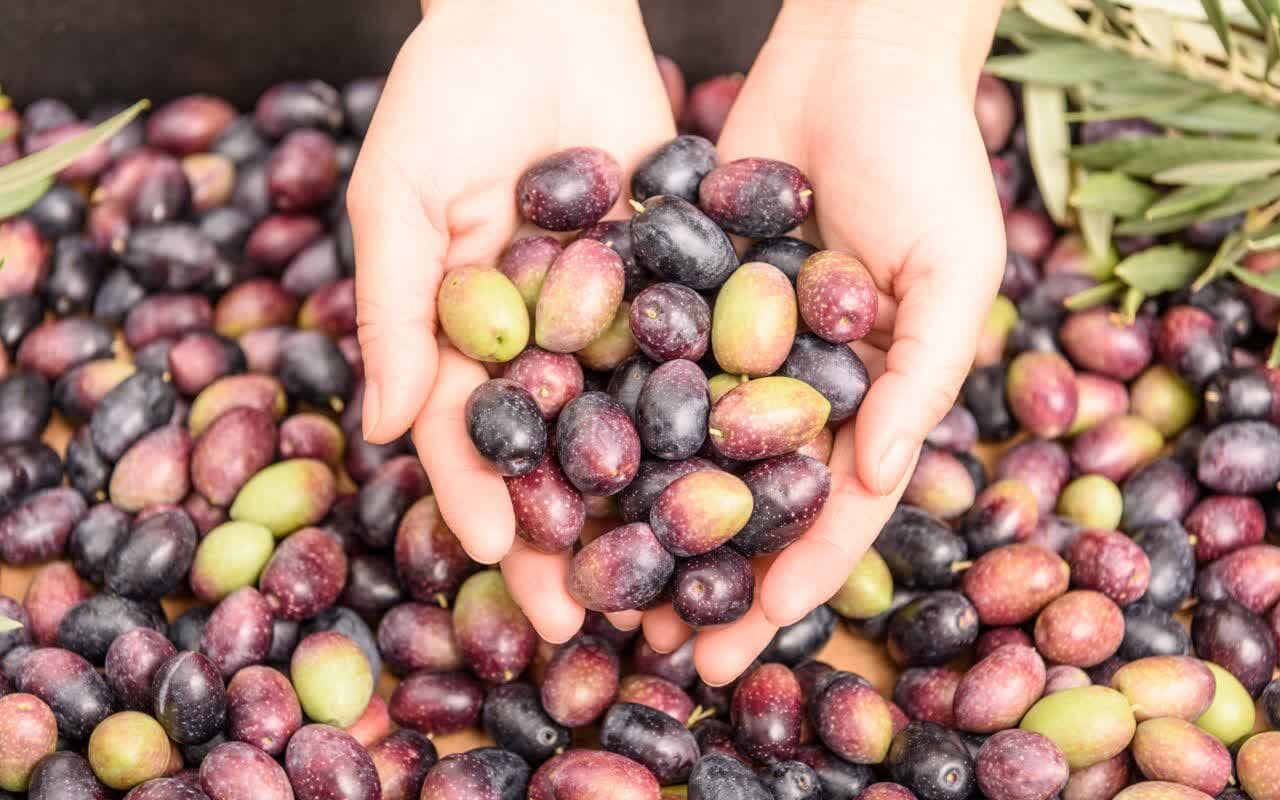Introduction
Kalamata olives, named after the city of Kalamata in Greece, have a history dating back centuries. They are typically grown in the southern Peloponnese region of Greece and are celebrated for their unique taste. Kalamata Olives have become a symbol of Greek cuisine, admired globally for their distinctive flavor and culinary versatility.
The Allure of Kalamata Olives
What Makes Kalamata Olives Special?
Kalamata Olives: A Taste of Greece in Every Bite is more than just a catchy phrase; it encapsulates the essence of this delicacy. These olives boast a rich, deep purple color and a meaty texture that distinguishes them from ordinary olives. The unique taste is a combination of fruity, tangy, and slightly bitter flavors that leave a lasting impression.
The Origin Story
The birthplace of Kalamata Olives is Messinia, a region known for its lush olive groves and ideal Mediterranean climate. Centuries of cultivation and the dedication of local farmers have refined the art of olive production, resulting in the renowned Kalamata variety.
How Kalamata Olives are Prepared
Kalamata olives are picked when they are fully ripe, which is when they are purplish-black in color. The olives are then cured using a natural fermentation process to develop their characteristic flavor.
Proper Storage Methods
To maintain the taste and quality of Kalamata olives, it’s essential to store them correctly. Here are some guidelines to follow:
Refrigeration vs. Room Temperature
Kalamata olives can be stored at room temperature if they are in an unopened container. However, once opened, it’s best to refrigerate them. The cold temperature helps slow down the oxidation process and extends their shelf life.
Using Olive Oil for Storage
Storing Kalamata olives in olive oil is a popular choice. The oil creates a protective barrier that prevents air from reaching the olives, keeping them fresher for longer.
Avoiding Common Mistakes
Avoid using containers made of reactive metals like aluminum or copper, as these can affect the olives’ taste. Additionally, make sure the container is airtight to prevent moisture from getting in.
The Culinary Versatility
Kalamata Olives are the go-to ingredient for countless Mediterranean dishes. Their robust flavor elevates salads, pasta, and even bread. The options are endless, and these olives are a staple in the Mediterranean diet.

Exploring the Health Benefits
Nutrient-Rich Powerhouses
Kalamata Olives are not just delicious; they are packed with nutrients too. They are a great source of monounsaturated fats, which are heart-healthy. They also provide essential vitamins and minerals, including vitamin E and iron.
Antioxidant Properties
These olives are rich in antioxidants, which help combat oxidative stress in the body. Antioxidants play a crucial role in reducing the risk of chronic diseases, making Kalamata Olives a wholesome addition to your diet.
The Cultural Significance
A Part of Greek Heritage
Kalamata Olives hold a special place in Greek culture. They are often featured in traditional Greek dishes, and the olive tree itself is a symbol of peace and prosperity. The olive harvest is celebrated with festivals, emphasizing the cultural importance of these olives.
Worldwide Appeal
Beyond Greece, Kalamata Olives have won the hearts of food enthusiasts worldwide. Their distinctive taste and versatility have made them a favorite ingredient in various international cuisines.
Cooking with Kalamata Olives
Salad Sensations
Kalamata Olives are a staple in Greek salads, adding a burst of flavor to the mix. The combination of fresh vegetables, feta cheese, and a drizzle of olive oil creates a delightful and nutritious dish.
Mediterranean Pizza
Create a Mediterranean-inspired pizza by topping your dough with Kalamata Olives, sun-dried tomatoes, and fresh herbs. It’s a mouthwatering experience that’s sure to please your taste buds.
Difference between Kalamata and Other Olives
The world of olives is diverse, with numerous varieties tempting our palates. Two of the most popular choices are Kalamata olives and their counterparts such as green, Manzanilla, and Picholine.
Olives have been cherished for centuries, not only for their delicious flavor but also for their incredible versatility. They come in various shapes, sizes, and tastes, making it crucial to understand the differences between them..
Origins and Cultivation
Kalamata olives are primarily grown in Greece, where the warm Mediterranean climate and fertile soil provide the ideal conditions for their cultivation. On the other hand, other olives are grown in various countries worldwide, such as Spain, Italy, and the United States.
Appearance and Taste
The distinctive dark color of Kalamata olives sets them apart from other olives. Their taste is bold, combining fruity and bitter elements. In contrast, other olives come in a range of colors, from green to black, and their taste can be milder or more briny, depending on the type.

Nutritional Value
Kalamata olives are rich in healthy fats, particularly monounsaturated fats. They also contain essential nutrients, including vitamin E, iron, and fiber. Other olives share some of these nutritional benefits but may vary in their specific content.
Culinary Uses
Kalamata olives are a staple in Greek dishes like Greek salad and moussaka. They are also commonly used in Mediterranean recipes and as table olives. Other olives find their place in a wide range of dishes worldwide, such as Spanish tapas and Italian antipasti.
Popularity and Availability
Kalamata olives have gained international popularity for their unique flavor, and they are widely available in most supermarkets and specialty stores. Other olives, depending on the type, have varying levels of popularity and availability.
Processing Methods
Kalamata olives are typically cured using brine, which contributes to their distinctive taste. Other olives may undergo different curing methods, including dry curing and water curing, resulting in differences in texture and flavor.
Price Comparison
The price of olives can vary depending on factors like origin, quality, and packaging. Kalamata olives, being popular, can sometimes be a bit more expensive compared to other olives.
Health Benefits
Both Kalamata and other olives offer health benefits due to their monounsaturated fats, antioxidants, and other nutrients. Regular consumption may support heart health, reduce inflammation, and provide essential vitamins and minerals.
Cooking Tips
When using Kalamata olives in recipes, remember that their bold flavor can be quite dominant. Other olives may be more versatile in dishes due to their milder taste.
Conclusion
In the vast world of olives, Kalamata and other olives offer unique flavors and characteristics that can elevate your culinary experiences. Whether you prefer the bold taste of Kalamata olives or the subtlety of other varieties, olives are a delightful addition to a wide range of dishes.
Frequently Asked Questions (FAQs)
Q1: Are Kalamata olives healthier than other olives?
A1: While Kalamata olives offer specific health benefits, the nutritional content of other olives can also be beneficial. It depends on your dietary preferences.
Q2: Can I substitute other olives for Kalamata olives in recipes?
A2: Yes, you can substitute other olives for Kalamata olives in most recipes, but be prepared for differences in taste.
Q3: What is the best way to store olives?
A3: Store olives in an airtight container in the refrigerator, preferably in their brine or oil, to keep them fresh.
Q4: Which type of olive is ideal for martinis?
A4: Green olives, such as Manzanilla or Queen olives, are popular choices for martinis.
Q5: Can I grow Kalamata olives in my backyard?
A5: Kalamata olive trees require a specific climate and care, so it’s best to consult with a local nursery for guidance on growing them at home.
Q6: Are Kalamata Olives only grown in Greece?
A6: Yes, authentic Kalamata Olives are exclusively grown in the Kalamata region of Greece.
Q7: Can I use Kalamata Olives in desserts?
A7: While not a common choice, some creative chefs incorporate Kalamata Olives in sweet dishes to balance flavors.

